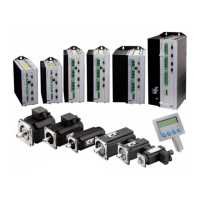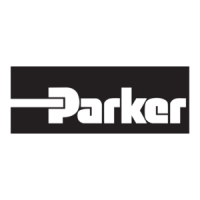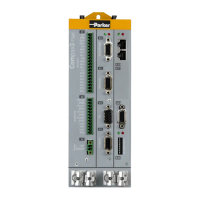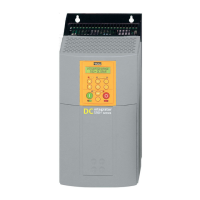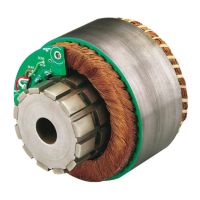Parker EME
Setting up Compax3
192-120113 N08 C3I12T11 - December 2010
Faulty motor and application parameters may lead under certain circumstances to
instable controllers.
The controller parameters are not directly available for the optimization. Instead,
they can be changed with the aid of the following optimization parameters:
Optimization of the current controller
dynamics:
Current loop bandwidth in %
"Attenuation of current loop" in %
Optimization of the velocity loop
dynamics:
"Attenuation" in %
Velocity loop - "D" term in %
The bandwidth parameter states the actually effective % of the calculated default
velocity. The default bandwidth of the current controller is fixed to approx.
fGR=531Hz. In reverse this signifies that each motor delivers the same step
response. The prerequisite is, of course, that you keep out of the control signal
limitation (voltage limitation). The attenuation characterizes the controller's
tendency to oscillate with respect to an excitation signal (see below). The stiffness
(of the velocity loop, corresponds to the bandwidth of the current loop) describes
the velocity of the velocity loop (see below).
Step response of the velocity loop depending on the optimization parameter
"attenuation" and "stiffness"
Attenuation = 100% Stiffness = 100%
1: Setpoint value
2: Actual value (stiffness = 200%)
3: Actual value (stiffness = 100%)
4: Actual value (stiffness = 50%)
5: Actual value (attenuation = 500%)
6: Actual value (attenuation = 100%)
7: Actual value (attenuation = 50%)
D-term
The D-term parameter ( of the velocity loop) activates existing control oscillations of
drives with elastic coupling (e.g. toothed belt drives). The D-term is not
automatically designed and must therefore be set manually.
Position loop
The position controller is automatically adapted depending on the stiffness of the
velocity loop.

